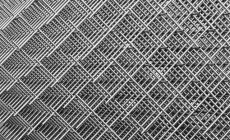Since the invention of electricity, incandescent bulbs were used by people to lighten their space. But as it is the job of science to improve and advance, more durable, energy and cost efficient CFLs were invented and introduced. But, now they have been replaced as well by a better option in the name of LEDs that are available under different names, such as LED low bay.
Today LEDs are the most advanced and efficient light source. Let’s get to know more about LEDs and how they work.
The Design
LED, short for light-emitting diodes, are semiconductors through which when the electrons pass, it turns into light.
The electrical connector is linked to the base and the driver, which goes into a heat sink. The light panel is protected with a rugged casing, typically in the shape of a globe.
This innovative design causes it to be energy efficient and the rugged housing makes the bulb more durable than the delicate old-fashioned incandescent or the CFL.
Price and Cost Comparisons
Though a bit expensive than the CFL and the 1 dollar incandescent light bulbs,
LEDs are actually more affordable in the long-run.
An average LED bulb consumes only one-sixth of the energy that an incandescent light bulb will use making it more energy efficient.
A comparison between the CFL, incandescent and the LED was done to find out the total amount of costs the three technologies will incur up when the bulbs are purchased to operate for a 25000 hours lifespan.
Here are the data for comparison and results:
Incandescent:
Having an average lifespan of 1,200 hours and energy consumption of 60W, a total of 21 (one dollar bulbs) will be required to produce 25,000 hours of light.
At $0.12 per kWh, the costs of electricity become $180, incurring a total cost of $201.
Compact Fluorescent Lamp (CFL)
With an average lifespan of 8,000 hours and energy consumption of 14W, a total of 3, (two dollar CFL bulbs) would be used to get 25,000 hours of light.
At $0.12 per kWh, the costs of electricity become $42, incurring a total cost of $48.
LED
With a lifespan up to 50,000 hours and energy consumption of 10W, only one bulb would be enough for 25,000 hours.
At $0.12 per kWh, the costs of electricity become $30, adding up to a total cost of $38.
It is pretty obvious that LEDs are much more affordable in the long-run as they help you save money. But, this is not the only benefit of LEDs. Let’s have a look at some more benefits of using LEDs:
- Save energy.
- LEDs contain no hazardous elements and are easy to dispose of making them environmentally friendly.
- LEDs convert 80% of the energy consumed into electricity making them extremely efficient.
LEDs are available everywhere and in different designs. They can be used everywhere, from homes to offices to outdoors and in fact, are waterproof as well. Be wise and jump to LEDs today.






















Leave a Reply
Your email address will not be published. Required fields are marked (required)